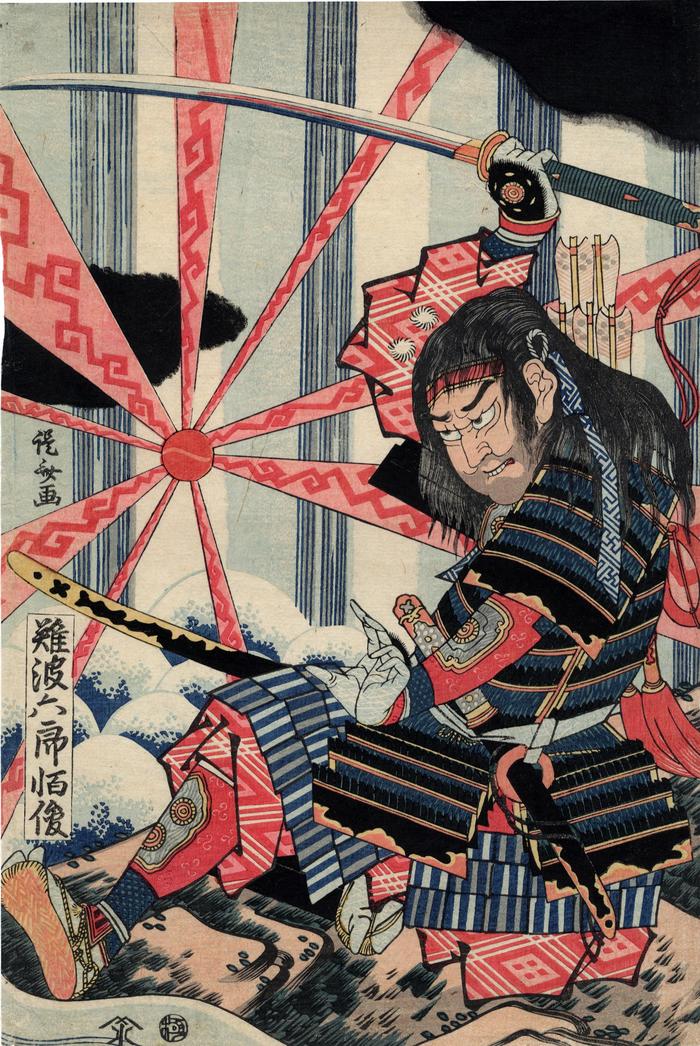Teisai Hokuba (蹄斎北馬) (artist 1771 – 1844)
Arisaka (family name - 有坂)Hoshino (original family name - 星野)
Gorohachi (nickname - 五郎八)
Shūen (go - 秋園)
Shunshunsai (go - 駿々斎)
Shunshuntei (go - 駿々亭)
Links
Biography:
"Biographical information found in various dictionaries and other secondary sources contain only the barest outlines of Hokuba's life. We know that Hokuba was born in Edo and held the post of a minor retainer with the family name of Hoshino 星野 which was later changed to Arisaka Gorohachi 有坂五郎八. When he resigned his post he moved to Asakusa 浅草, a district reserved for the merchant class or chōnin 町人. The seemingly downward trend in the social hierarchy, from samurai 侍 to townsman, was not at all unusual. Living on the small salary allotted to low level retainers was difficult and many samurai took up other occupations to make ends meet. For some this meant giving up their hereditary status and station. Nothing is known of Hokuba's formal education, but we can assume more than just basic literacy."
Quoted from: "Charm, Wit, and Sensuality in Two Paintings by Teisai Hokuba" by Judy Stubbs, Monumenta Serica, Vol. 43 (1995), p. 442.
" Hokuba worked primarily, though not exclusively, as a painter. He is best known for his paintings of bijin 美人 (beautiful women). The subjects of these works were the elegant ladies of the pleasure quarters. We see them pursuing various seasonal activities - catching fireflies, admiring the cherry blossoms or strolling through the Yoshiwara 吉原, the section of town set aside for legal prostitution." (Ibid., p. 442)
Most of his print designs were for surimono. (Ibid.)
****
While Hokuba was no stranger to creating images of warriors fighting each other or struggling against mythical creatures most of these appeared almost exclusively in his book illustrations, many of which are buried away in the archives of Japanese collections.
Little is written or known about Hokuba (北馬: 1771-1844) - like so many other ukiyo-e artists. According to Roberts he was a painter, printmaker and illustrator. He was born in Edo and lived there throughout his life. "One of the outstanding pupils of Hokusai." Roberts later added that Hokuba was a prolific artist who designed many surimono, book illustrations, but was known best for his paintings of beautiful women. He "Worked first in the Kanō style, then influenced by Hokusai, but still retained something of the Kanō qualities; a delicate, quite charming manner."
****
Richard Lane in his book Hokusai: Life and Work says on p. 111 that "Attracted by his eccentric, innovative style, Hokusai's new pupils came from all walks of life: of the more notable ones Hokuba, for example, was a retired government official [i.e., a samurai], and Hokkei had been a fishmonger."
Matthi Forrer in his book on Hokusai notes that "Hokuba was reputed to draw as excellently with his left hand as with his right."
